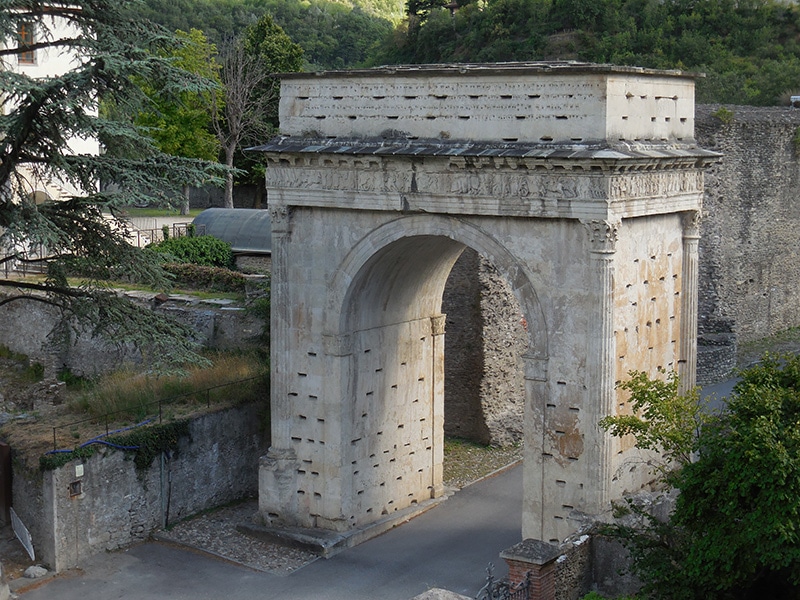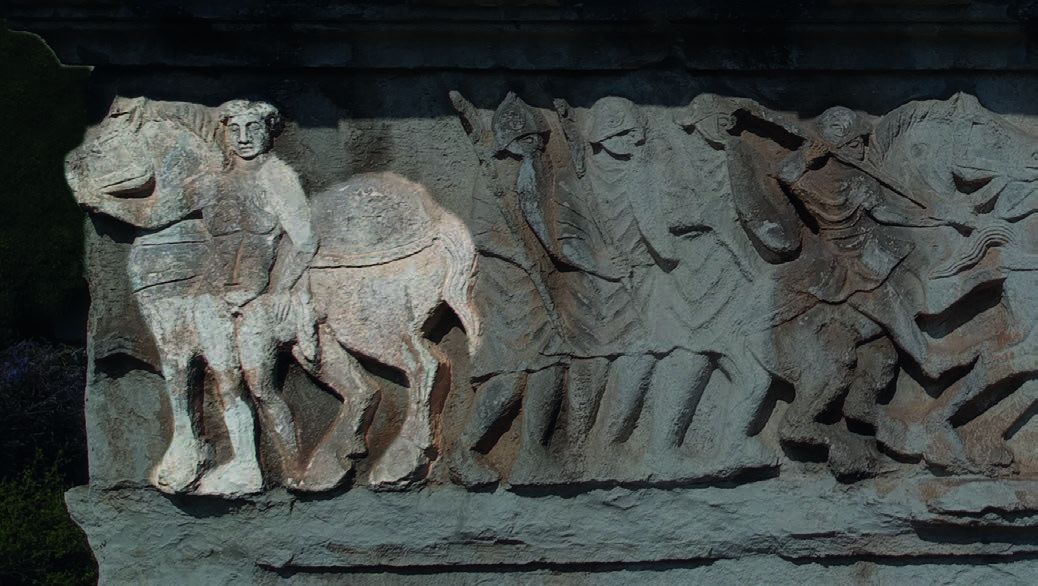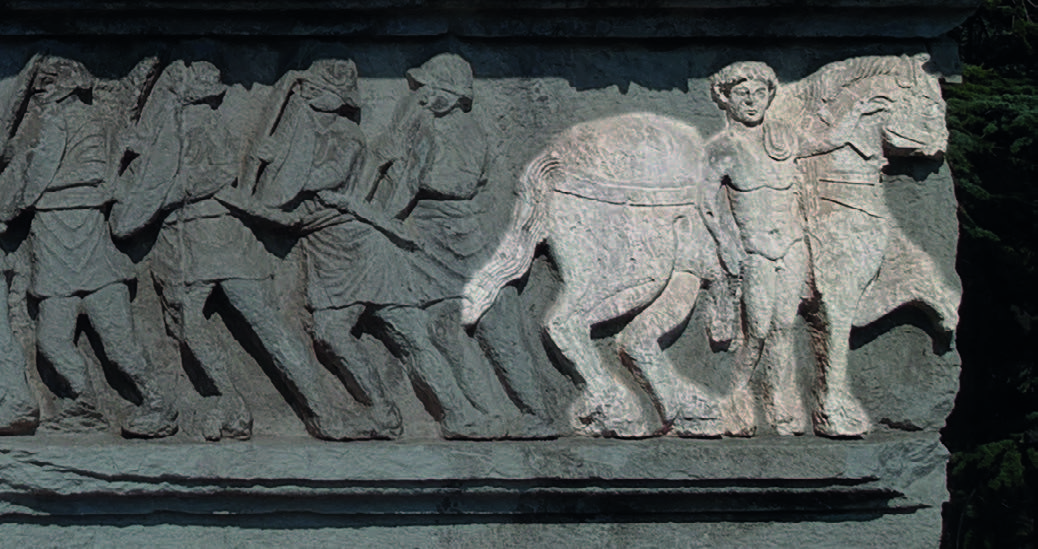DIOSCURI
DIOSCURI
Associazione il Ponte SUSA
I dioscuri, lato sud dell’Arco.
DIOSCURI
Alle due estremità del fregio meridionale sono state simmetricamente poste due figure in cui si riconoscono Càstore e Pollùce: cioè i Diòscuri.
I figli di Giove e Leda danno un’impronta di sacralità e di celebrazione dei valori virili.
Secondo la tradizione, Càstore era un abile domatore di cavalli, mentre Pollùce esprimeva la sua forza nel pugilato.
Entrambi sono proposti secondo l’iconografia che tradizionalmente li contrassegnava, ma sono privi del pileo, il tipico copricapo che ricorre spesso nelle loro rappresentazioni.
Nel monumento valsusino sono caratterizzati da un’efebica nudità e dal mantello appoggiato sulla spalla; entrambi trattengono un cavallo.
I dioscuri, lato sud dell’Arco.
DIOSCURI
At the two far edges of the southern frieze there are two symmetrically positioned figures that most scholars believe are Castor and Pollux, that is the Diòscuri.
The sons of Zeus and Leda set a tone of sacredness as well as a celebration of virility values.
According to tradition, Castor was a proficient horse trainer, whereas Pollux demonstrated his strength through boxing.
Both bear distinguishing marks in the iconography but they are without pileus, the typical head cap with which they are normally depicted. In the Val Susa monument, they are shown as young nudes wearing capes on their shoulders.
Each one is holding a horse, the symbolic animal of Castor which in this occasion would seem to represent an affinity with the numerous horsemen shown on the front of the frieze.
Guarda il video dei Dioscuri sul Fregio dell’Arco di Augusto di Susa


